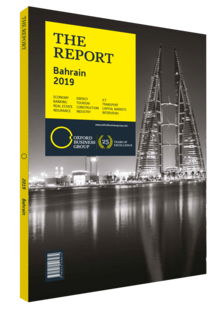Bahrain's energy sector seeks investors for major hydrocarbons find
In early September 2017 Bahrain’s state-backed hydrocarbons entities made a major new tight oil and gas find in the Khaleej Al Bahrain basin. The discovery, which covers more than 6000 sq km, contains probable reserves of around 81bn barrels of oil and 14trn standard cu feet of associated gas.
Assessing Potential
When the discovery was first made public in April the following year, initial enthusiasm about the find was partially tempered by suggestions that its unconventional nature and offshore location could do damage to its commercial viability. However, Yahya Mohammed Al Ansari, general manager of exploration and development at Bahrain’s oil and gas company Tatweer Petroleum, argued that such concerns had been overplayed given the geology of the resource. “The find is located in carbonate source rock, and has a calcite percentage of more than 95%, which is very attractive when it comes to rock frackability and will allow for greater drainage per well,” he told OBG.
“Furthermore, it also has a reservoir-like layer at the top, which sets the play on the boundary between conventional and unconventional, rather than as a pure unconventional shale-type play,” he said, adding that recovery rates should be higher and required investment per well lower than would be the case for typical unconventional projects. According to Al Ansari, a close analogue to the discovery’s geology is the Jafurah Basin in Saudi Arabia. “Aramco has more than 200 wells drilled in Jafurah, which will help us to speed up our learning curve,” he said.
Offshore Advantage
Al Ansari argued the offshore nature of the discovery is also less of a challenge than has sometimes been portrayed. “A significant part of the resource is in very shallow water, of a depth of no more than 15 metres,” he told OBG. “This will allow us to develop it through land reclamation and the construction of artificial islands, a field in which Bahrain already has ample experience,” he added, stating that the main challenge posed by its offshore nature was related to exploration efforts that were complete rather than production. “The Manifah project in Saudi waters has already shown that you can cover a huge drainage area with a number of small islands holding around 30 to 40 wells each, which are not expensive to build. In our case, production will involve lateral drilling with multi-stage fracking, which has never been done before. The large volume of fluids and equipment required on site is a logistical challenge, but we have undertaken a substantial amount of innovation to make sure everything is available,” he told OBG.
Development Strategy
The authorities have put together a field-development plan for the find, for which they are now seeking investment from both international oil companies and financial investors, such as banks and private equity firms. As of early 2019 they were in discussion with US oil and gas service firms Halliburton and Schlumberger over the drilling of early production wells. The plan envisages a small number of these being drilled in the first two years, rising to roughly 1200 wells over the following six to seven years. Once these are in place, production should reach its peak level of around 200,000 barrels per day – a figure that would approximately double the kingdom’s current oil output.
Maximising Value
Other initiatives in the pipeline may help to further boost domestic hydrocarbons production over the coming years, including the sector authorities’ plans to develop large reserves of heavy oil located in a shallow layer of the Bahrain Field. Al Ansari told OBG that these efforts could yield up to 4bn barrels of oil above and beyond the estimates for the field’s reserves. In July 2018 Tatweer embarked upon a pilot programme to stimulate the reservoir, using methods which include steam injection, and the use of microbial technology and solvents to break the oil down into lighter components.
You have reached the limit of premium articles you can view for free.
Choose from the options below to purchase print or digital editions of our Reports. You can also purchase a website subscription giving you unlimited access to all of our Reports online for 12 months.
If you have already purchased this Report or have a website subscription, please login to continue.

